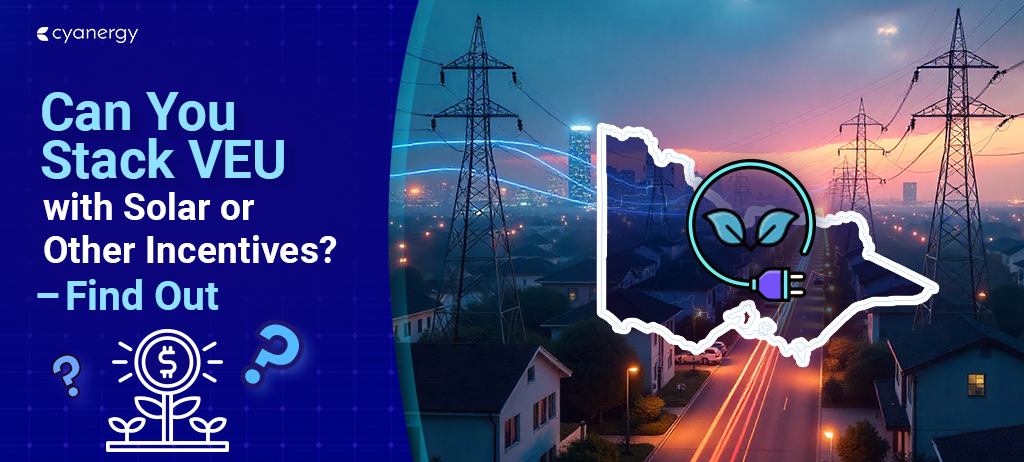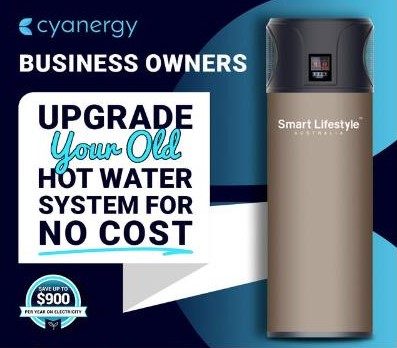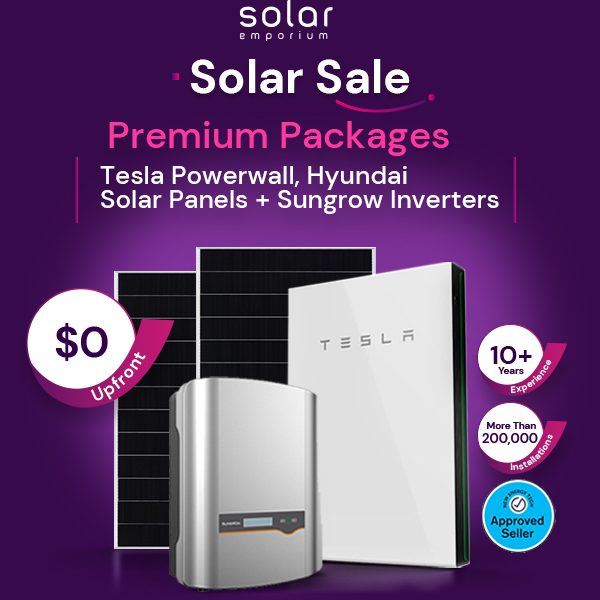Ever wondered if those “energy rebates in Australia” you keep hearing about are actually worth it?
Well, the Victorian Energy Upgrades (VEU) program might just surprise you. It’s not like any complicated government scheme; you can think of it as a smart shortcut to lower bills and a more energy-efficient home.
From swapping out old appliances to getting discounts on smart aircon upgrades, VEU helps Victorians save in ways that often go unnoticed.
But the real question is: how much can you actually save, and is it worth the upfront cost?
Let’s dig in and see how the numbers and the benefits really stack up for Victorian Households.
In this blog post:
- Victorian Energy Upgrades (VEU) Program: How It Works?
- Rebate vs Out-of-Pocket Cost: Amount You Need to Pay!
- Old vs New Aircon Systems: Which One Really Saves You Money?
- Payback Period: When Your Upgrade Pays for Itself?
- Air Conditioner Cost Savings Calculator
- Sensitivity Analysis: Electricity Price & Usage Patterns
- Takeaway Thoughts
Victorian Energy Upgrades (VEU) Program: How It Works?
The Victorian Energy Upgrades (VEU) program aims to make energy-efficient products and services more affordable for Victorian households.
By replacing old, inefficient systems with energy-efficient alternatives, the program helps to reduce energy consumption and lower greenhouse gas emissions.
How does it work?
In Australia, accredited providers install energy-efficient upgrades, which generate Victorian Energy Efficiency Certificates (VEECs). These certificates are then sold to energy retailers, which in turn fund the discounts and rebates offered to consumers.
Types of Upgrades Covered by the VEU Rebate Program
Here are the key things the VEU rebates include, according to the Victorian official sources:
- Discounts or rebates on eligible products when installing energy-efficient upgrades. This covers:
- Heating and Cooling Systems
- Hot Water Heat Pump Systems
- LED Lighting
- Weather-Sealing
- For households, consider energy-efficient replacements such as reverse-cycle air conditioners instead of old
gas heaters, heat pump hot water systems, and other approved upgrades.
- For businesses and commercial spaces: larger-scale energy-efficient system upgrades, including lighting,
HVAC, solar, and battery
systems, in some cases supported by the VEU scheme.
- The rebate is facilitated via accredited providers who install approved products, generate the relevant certificates, and apply discounts upfront for the consumer.
Rebate vs Out-of-Pocket Cost: Amount You Need to Pay!
When you upgrade via the VEU program, you get a discount rather than a cash subsidy after the fact: an accredited provider quotes you the installation, including the discount built in.

Here are some rebates offered for upgrading your air conditioning system:
- Suppose you install an efficient room-reverse-cycle air conditioner, replacing a hard-wired electric resistance room heater with a 3 kW to 9 kW system, you can receive a discount of up to approximately $840.
- If you replace a ducted (whole-of-house) gas heater with four split systems (one 8 kW and three 3 kW), you may be eligible for a discount of up to approximately $2,520.
- For ducted reverse-cycle systems with a capacity of 10 kW to 22.4 kW, replacing them with central electric resistance or gas ducted heating can result in discounts of up to $5,460.
Overall, depending on your choice of upgrade, households can save between $120 to $1,100 per year on energy costs.
For example, in 2025, announcements include savings on appliance costs from discounts of up to $5,530 for heating and cooling system upgrades, as well as over $1,000 per year on the power bill.
What Does “Out-of-Pocket” Cost Mean?
Your out-of-pocket cost is the amount you actually pay for an energy upgrade after the VEU rebate savings have been applied.
Suppose the supply and installation of a new reverse-cycle split system would cost $6,500.
Let’s say the VEU discount might be $2,500, depending on your existing system.
Then your total upfront cost is $4,000.
And the best part is that once you’ve paid that, you also save on running costs over the years.
But remember! The discount varies significantly depending on your existing system, whether you remove the old system (decommissioning), installation complexity, the size of the home, and other factors.
Therefore, when you get quotes, ask your installer how much of the total quote is the discount already built in, and what your final amount is that you need to pay after the rebate applies.
Old vs New Aircon Systems: Which One Really Saves You Money?
Upgrading is just one half of the equation; the other big half is how much your future energy bills drop.
Here are some recent data points that show the Running Cost Comparisons vs Old Systems for Victoria:
- Data show that replacing a gas space heater with an efficient reverse-cycle air conditioner under the VEU
program can result in savings of up to $370 per year in operating costs. Additionally,
replacing a ducted gas heater with an efficient reverse-cycle air conditioner can save up to
$1,010 per year.
- Here are some more data on energy
savings from Sustainability
Victoria’s “Calculate heating running costs” table:
- For a small house (100 m²):
- For a medium house (160 m²):
Gas ducted system with a 3-star efficiency rating = $1,961 in energy costs per year.
Reverse-cycle multi-split with 2.5 stars = $513 in energy costs per year.
That’s a saving of approximately $1,450 per annum.
gas ducted with a 3-star efficiency rating = $2,921 per year;
Reverse-cycle multi-split with 2.5 stars, approximately $923 per year.
That’s a saving of around $2,000 p.a.
- From a recent report: Converting an existing home from gas to all-electric will save the average family
around $1,700 per year, and with rooftop solar, up to $2,700 per year.
So, what does this mean in practical terms?
Suppose your old system is a gas ducted heater that costs approximately $2,500 per year to run, and you replace it with a modern reverse-cycle system costing approximately $900 per year. In that case, you save approximately $1,600 each year.
Therefore, if you factor in the VEU discount, the payback becomes more attractive. It’s a win-win for all.
Payback Period: When Your Upgrade Pays for Itself?
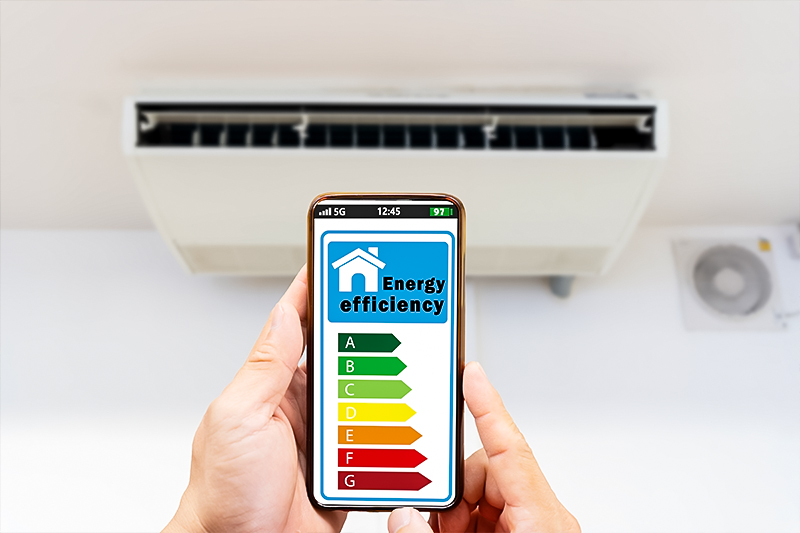
When Do the Savings Start? Let’s talk about the Payback Period for your VEU rebate.
In many Victorian homes, once you include the VEU discount and significant running cost savings, you’re looking at payback periods of 2-4 years in most cases.
If the discount is small or your usage is low, for example, if you don’t heat or cool your home much, then payback might stretch longer, 5-10 years, and may be less attractive purely financially.
Here is the Break-Even Analysis & How Long Until You See Savings
| Scenario | Cost Breakdown |
|---|---|
| Scenario A Medium house replacing gas ducted heating with reverse-cycle split | • Upfront cost after VEU discount: $4,000 • Annual running cost of the old system: $2,500 • Annual running cost of the new system: $900 • Annual savings from running costs: $1,600 • Pay-back period = upfront cost ÷ annual savings • 4,000 ÷ 1,600 • 2.5 years |
| Scenario B Smaller upgrade, like replacing a single gas space heater with a split system | • Upfront cost after discount: $2,000 • Old running cost: say $1,200/year • New running cost: say $500/year • Savings: $700/year • Pay-back period = upfront cost ÷ annual savings • 2,000 ÷ 700 • 2.9 years |
Air Conditioner Cost Savings Calculator
To help you estimate your own savings, here’s a simple table you can use
| Parameter | Example Value |
|---|---|
| Upfront cost (supply + install) | $6,500 |
| VEU discount | $2,500 |
| Net upfront cost (X) | $4,000 |
| Annual running cost – old system | $2,500 |
| Annual running cost – new system | $900 |
| Annual running cost savings (Y) = old- new | $1,600 |
| Pay-back period (X / Y) | 4,000 / 1,600 = 2.5 years |
How to use the table value?
Here’s your step-by-step guide on how to use the tabulated value to generate cost savings from your new system.
- Estimate your current system’s annual running cost.
- Estimate the running cost of the new system. You might assume you’re buying a high-efficiency reverse cycle
rated system, with usage patterns similar to those of older ones.
- Get a quote from an accredited provider for supply and install,
factoring in the VEU discount.
- Plug the values into the table and calculate the payback.
- You might also want to extend to a 10-year savings estimate for this use:
- Annual savings × 10 years – (Upfront cost)
This yields the net savings over 10 years, excluding maintenance/discount rate.
Sensitivity Analysis: Electricity Price & Usage Patterns
Regardless of the rebate, your actual savings depend on certain assumptions, so now let’s explore how changes in key variables affect the outcomes.
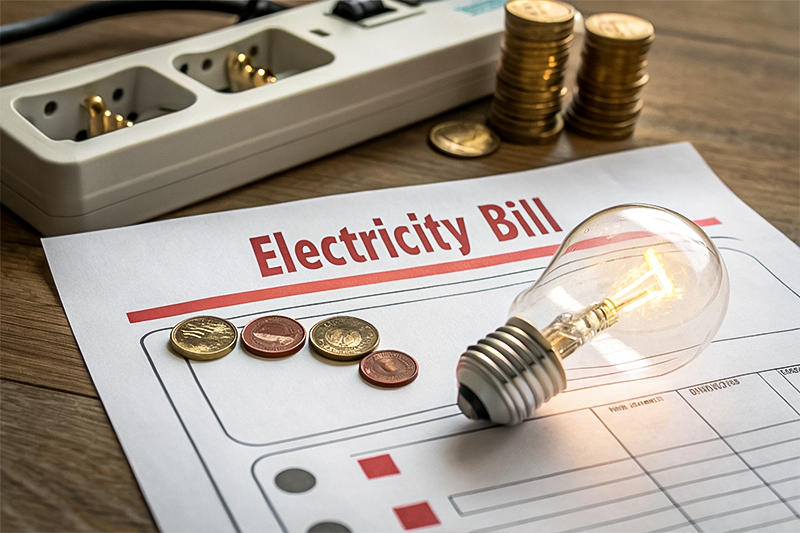
Electricity price increase
Suppose the electricity price rises by 5% per year. The gas price may also increase.
- If your new running cost starts at $900 this year, year 2 would be approximately $945, year 3 would be
roughly $992, and so on. Over the course of 10 years, this combination lifts your savings.
- The payback period shrinks slightly because the savings grow each year.
Usage patterns
If you heat or cool more, for example, if you work from home, live in a cold climate or have a large household, your running cost with the old system may have been very high.
Conversely, if your home is smaller or already energy-efficient, your savings and payback will be smaller and shorter as well.
Discount size (VEU rebate)
If your VEU rebate is smaller, say you get $1,000 instead of $2,500, your upfront cost rises by $1,500, extending your payback by about a year or more.
So, always get an accurate quote and confirm your discount before making a commitment.
Additional benefits (cooling + heating)
Upgrading to a reverse-cycle system gives you both heating and cooling in one unit. If you also benefit from lower cooling costs and improved comfort, your overall or “effective” savings increase, helping to shorten the payback period even further.
- Case study:
The Guardian article noted that households replacing ducted gas with reverse-cycle split systems could save between $999 and $2,215 annually, including cooling benefits.
Lifespan and maintenance
Your new system will last 10-15 years (or more). If you assume a 12-year lifespan and pay it off in 3 years, you have 9 years of “net savings” after repayment. That adds up.
However, you should also factor in potential maintenance and inverter replacement costs.
Takeaway Thoughts
If you live in Victoria, even if the upfront cost after the VEU rebate is a few thousand dollars, the payback is often short, and thereafter you benefit from reduced bills for many years.
Of course, every home has a unique touch, so we strongly recommend using the calculator, table, and above information, tailored to your specific house: your existing system, your usage, your climate, your electricity or gas tariffs, and your installer’s quote.
That empowers you to make a financially informed decision, rather than being influenced by thousands of dollars in a brochure.
For more information about VEU Programs, Contact Cyanergy today!



